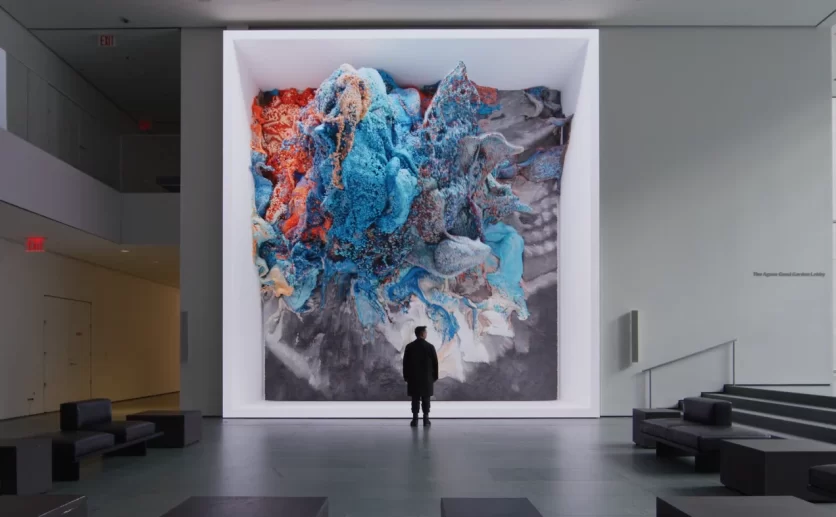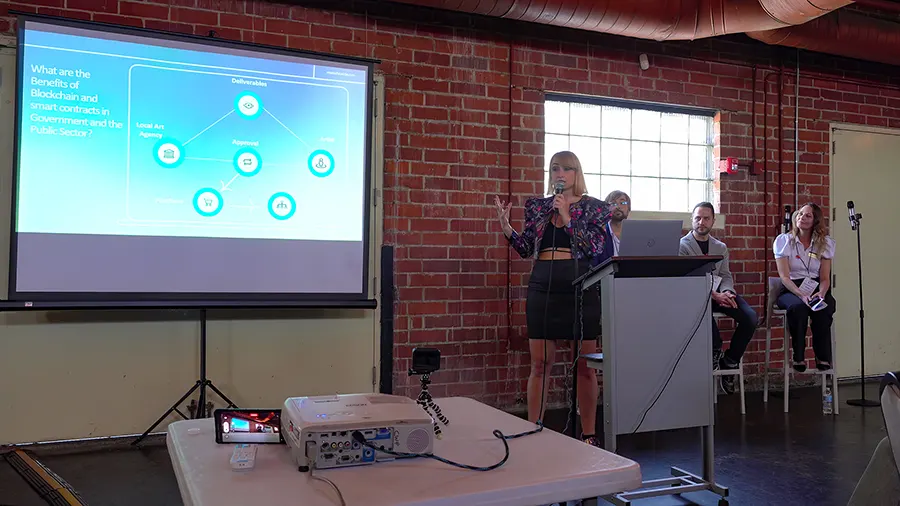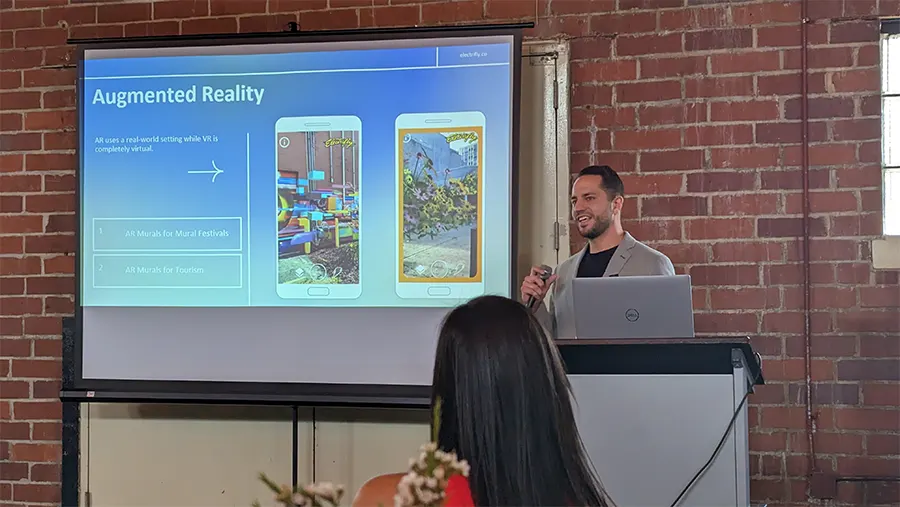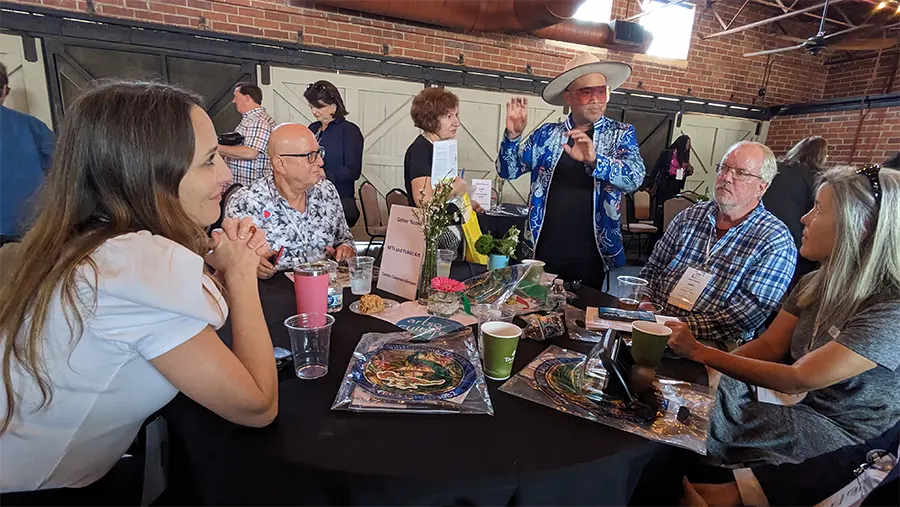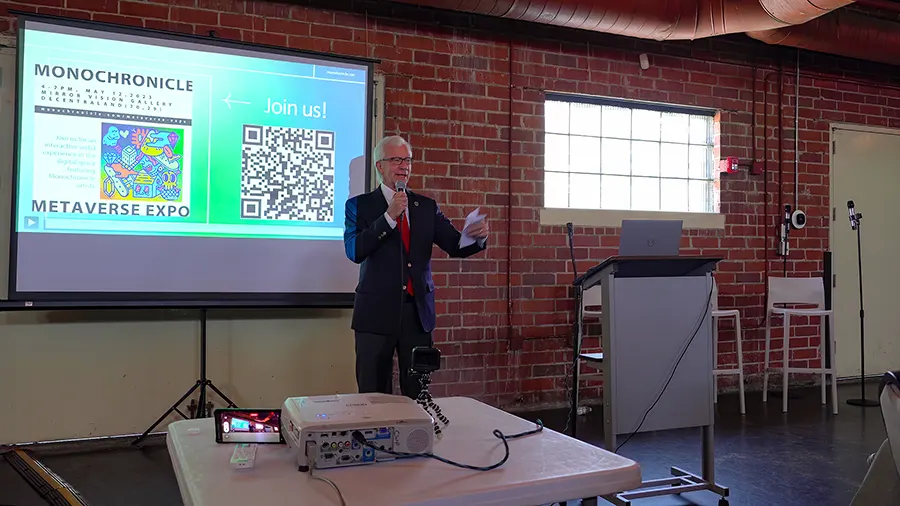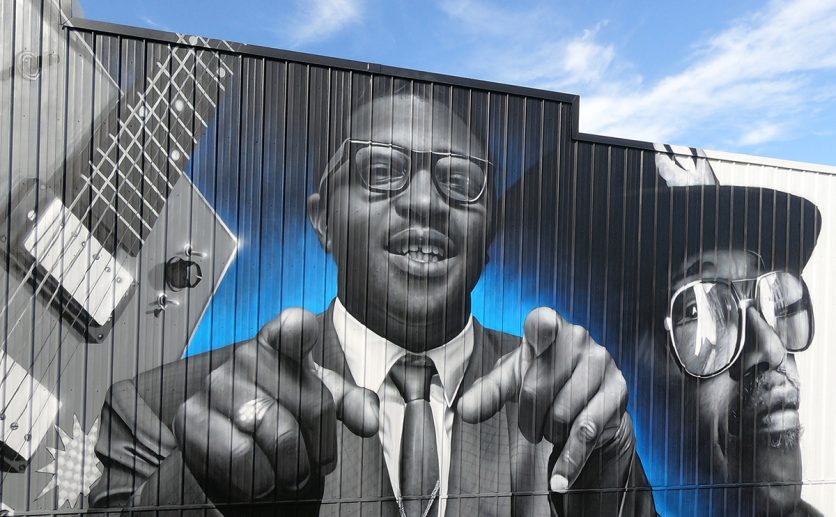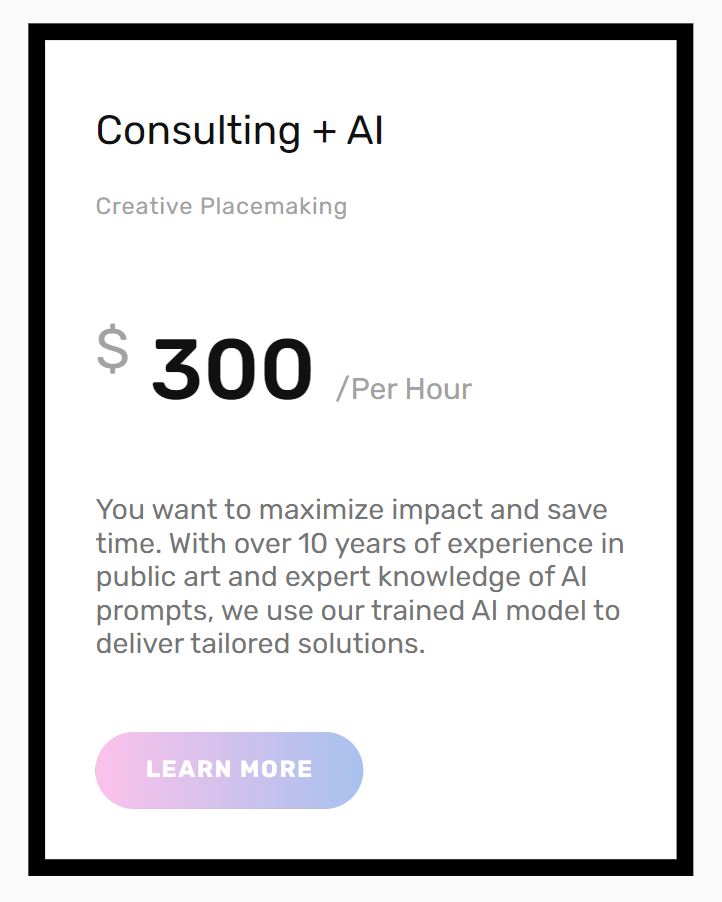As the digital landscape evolves, so too does the world of public art. From static pages to interactive platforms, the web has fundamentally transformed how art is created, shared, and experienced. Now, with the advent of Web3 and blockchain technology, public art stands on the brink of a new revolution—one promising unprecedented transparency, efficiency, and engagement. This notion was explored in depth at the recent Florida Association of Public Art Professionals (FAPAP) Conference, where the application of blockchain in the art world took center stage.
From Web1 to Web3: A Digital Evolution and Public Art
Web1: The Static Web
The first version of the web also referred to as the Syntactic web or read-only web is the era (end of 1980s–2000) where the role of a user is limited to reading information provided by the content producers. Web1 had a huge number of content consumers but a small number of content creators. There is no option given for the user or consumer to communicate back the information to the content producers. In its earliest days, the internet was a repository of static websites used mainly for information dissemination. This “Web1” era had minimal impact on public art due to its one-way communication nature, offering little scope for audience interaction or collaboration.
Percent-for-art was first utilized in Philadelphia in 1959 (City of Philadelphia, 2019). The 1970s saw an expansion of its usage as the ideas of public space as a democratic canvas arose within the civil rights movements. In the 1990s, some artists called for artistic social intervention in public space. These efforts employed the term “new genre public art” in addition to the terms “contextual art”, “relational art”, “participatory art”, “dialog art”, “community-based art”, and “activist art”. The 1980s marked a significant era of growth and globalization for graffiti, as it spread internationally and began to be recognized as a form of artistic expression beyond vandalism (Straat Museum, 2021).
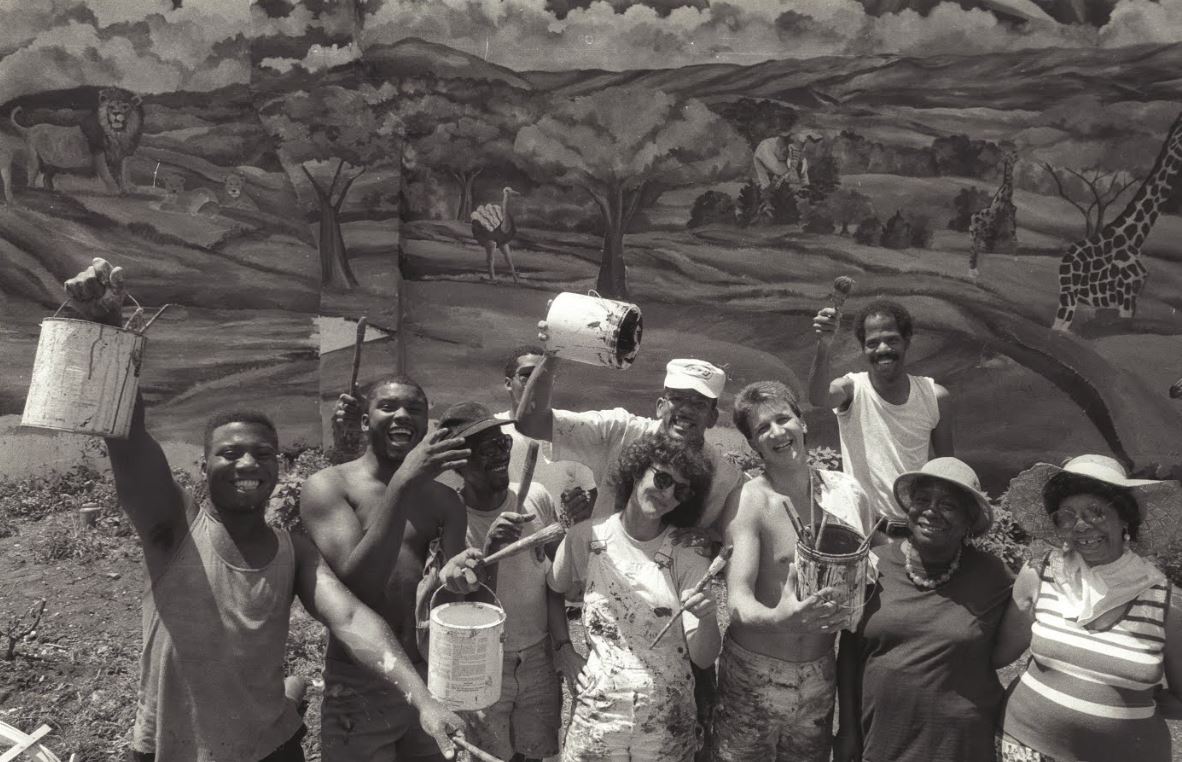
Jane Golden and Crew, 1988. Courtesy of Temple University Libraries, Urban Archives, Philadelphia, Pennsylvania, as part of the Philadelphia Inquirer Collection.
Web2: The Interactive Web
Web2 introduced a dynamic shift towards interactivity and user-generated content. It is the current version of the web with which we are all familiar. Innovations such as smartphones, mobile internet access, and social networks have driven the exponential growth of the Web. Social media platforms, blogs, and wikis democratized content creation, which significantly affected public art. Artists and organizations could now reach wider audiences, promote engagement through digital platforms, and gather instant feedback, thus fostering a vibrant community of creators and spectators. Examples: Blogging, podcasting, tagging, social bookmarking, social media, social networking.
The 2000s saw a sharp rise in the use of the internet: websites, blogs, chats, and forums dedicated to graffiti and street art allow artists to show their works to an international audience and to connect with their peers worldwide. Banksy started his popular stencil series titled ‘Girl with Balloon’.
Web3: The Decentralized Web
Web3 or a Social Web marks a significant evolution, incorporating decentralization, blockchain technology, and tokenization, including Non-Fungible Tokens (NFTs). For public art, this means artists can authenticate, sell, and manage artworks transparently. Moreover, communities can exert greater control and ownership over their creations, thanks to decentralized platforms. The semantic web advances web technologies by allowing users to create, share, and connect content through search and analysis based on the ability to understand the meaning of words rather than just keywords or numbers. AI can help computers and devices understand information just like normal people, with faster and more productive results. It will leverage user feedback as a vital resource for encouraging the web to offer reliable data. Web3 could help in reimagining graphics technologies alongside ensuring easier interactions with three-dimensional virtual worlds, AR, or the metaverse. The three-dimensional design is a common highlight in web3 applications, services, and websites that create immersive worlds not just for gaming but also for other crucial applications in different sectors like healthcare, e-commerce, real estate, and public art.
Web3 technologies like AI, AR, VR, and NFTs are significantly influencing public art, transforming traditional murals and sculptures into dynamic, interactive experiences. Artists like Refik Anadol exemplify this shift; using AI, Anadol creates large-scale digital installations on LED walls at prestigious venues like MoMA (MoMA, 2022).
These technologies enable artworks that are not only visually striking but also continuously evolving, allowing digital art to decorate walls without permanent physical alterations. This approach promotes a sustainable model where art can be updated or changed without impacting the underlying architecture, providing cities and spaces with ever-changing visual narratives. In 2024, Monochronicle was awarded a grant to create a digital mural in the lobby of Hyatt Place Gainesville Downtown, offering a modern alternative to traditional art forms.
Blockchain’s Impact on Public Art: Insights from the FAPAP Conference
At the FAPAP Conference held in Orlando in 2023, the “Web3 & Public Art” panel featured thought leaders like Iryna Kanishcheva (CEO, Monochronicle), Jay Rosen (Owner, Mirror Vision Gallery), and Coralie Claeysen-Gleyzen (Curator, Orlando Museum of Art). They discussed how Web3 components, the latest tools, methods, and technologies used in the industry could revolutionize public art artworks and administration. From Blockchain to NFTs, to digital art installations, and AR. This conversation introduced the idea of how art agencies can utilize blockchain technology today and in the future.
Enhancing Transparency and Efficiency
One significant advantage of blockchain is its ability to make all transactions within the field of public art production transparent. This technology could simplify compliance with FOIA, providing a decentralized network that is accessible globally. This transparency is crucial not just for artists and administrators but also for the public, ensuring taxpayer money is spent judiciously.
Protecting Digital Identities and Facilitating Data Exchange
Blockchain also offers solutions for establishing protected digital identities and managing records through smart contracts. This is particularly relevant for facilitating secure data exchanges between governmental institutions and citizens, streamlining processes that traditionally require cumbersome verification.
Innovative Applications in Public Art
The conference also highlighted innovative uses of blockchain in public art:
- Authenticity and Provenance Tracking: Verifying artwork authenticity and tracking its history to prevent fraud.
- Smart Contracts for Artist Agreements: Automating agreements between artists and agencies to ensure fair compensation and clear terms.
- Public Participation and Governance: Using blockchain for public voting on art projects, enhancing participation and transparency in decision-making processes.
In 2021, Monochronicle and its founder Iryna Kanishcheva first introduced the concept of applying blockchain in public art at the BLOCKCHAIN 2021 congress in Salamanca, Spain. The innovative approach was also detailed in a publication in the Springer Scientific Journal titled “Blockchain and AI in Art: A Quick Look into Contemporary Art Industries.” This work explores the intersection of blockchain technology and artificial intelligence (AI) with contemporary art, highlighting their potential to transform industry practices like transparency, authenticity verification, and monetization of art data through NFTs and smart contracts (Suvajdzic, Stojanović, and Kanishcheva, 2022). Read about this exploration here: Blockchain and AI in Art: a Quick Look into Contemporary Art – Monochronicle.
Looking Ahead: The Future of Public Art in the Web4 Era
While still conceptual, Web4 promises to integrate AI and further advancements in decentralized technologies, potentially revolutionizing public art even more profoundly. This could include AI-assisted curation, AI-generated art, and more immersive, interactive experiences that could make art more accessible and engaging for all.
Is there a Future for NFTs?
Yes, there’s a future for NFTs despite some market challenges. The technology behind NFTs—blockchain—provides unique advantages such as provenance, authenticity, and ownership in digital environments that can’t be easily replicated by other systems. While the market has seen fluctuations and failures, these are common in the early stages of any new technology. As the applications of NFTs expand beyond art into areas like gaming, real estate, and digital identity, their utility and relevance are likely to grow, potentially stabilizing and strengthening the market.
How to add real-world value and utility to your NFTs?
Monochronicle explores and utilizes NFTs in various ways:
- NFTs can be used to represent memberships or event tickets. For example, Monochronicle NFT is used as a membership card for the network, granting access to exclusive events and perks.
- NFTs can also be used to represent ownership of physical products. For example, an NFT could be used as a certificate of authenticity for a piece of art. This would allow the owner to prove ownership and authenticity of the physical artwork, while also allowing the artwork to be tracked and recorded on the blockchain.
- NFTs can also be used to represent loyalty rewards or points. For example, at Monochronicle we are exploring NFTs as tokens that can be earned by applying to projects. These tokens could then be redeemed for exclusive offers.
- NFTs can also be used to represent governance and voting rights. For example, an NFT could be used as a token that grants the holder the right to vote on proposals. At Monochronicle we have a public vote option that allows users to vote without registration. With NFTs, those votes would be more secure and private.
- .NFTs can also be used to represent exclusive content and experiences, such as VIP membership, early access, meet-and-greets, private tours, or behind-the-scenes access to an artist or creator.
- NFTs can also be used to represent access to events within virtual worlds or metaverses. For example, an NFT could be used to represent a ticket to a virtual exhibition within a metaverse or fundraising.
Conclusion
As we transition from Web2 through Web3 and look towards Web4, the potential for reshaping public art is immense. The FAPAP conference and BLOCKCHAIN 2021 Congress have shown that integrating blockchain technology can not only enhance how art is managed and experienced but also ensure it remains an integral, dynamic part of our communal spaces. For art administrators and public artists, the call to action is clear: embrace these technological advances to make public art more dynamic, inclusive, and engaging. Contact us if you are interested in workshops or presentations on the topic. As we move forward, education about these technologies will undoubtedly reshape the landscape of public art, making it a more integral part of our digital and physical worlds.
References
Cover image: Unsupervised, part of Machine Hallucinations, Refik Anadol Studio’s ongoing project exploring data aesthetics based on collective visual memories. Courtesy refikanadol.com.
- City of Philadelphia. (2019). Philadelphia is celebrating 60 years of Percent for Art. Retrieved from https://www.phila.gov/2019-04-18-philadelphia-is-celebrating-60-years-of-percent-for-art
- Straat Museum. (2021). History of graffiti and street art: The 1980s and 1990s. Retrieved from https://straatmuseum.com/en/blog/history-of-graffiti-and-street-art-1980s-1990s.
- MoMA. (2022). Refik Anadol on AI, Algorithms, and the Machine as Witness. Retrieved from https://www.moma.org/magazine/articles/821.
- Suvajdzic, M., Stojanović, D., Kanishcheva, I. (2022). Blockchain and AI in Art: A Quick Look into Contemporary Art Industries. In: Prieto, J., Partida, A., Leitão, P., Pinto, A. (eds) Blockchain and Applications. BLOCKCHAIN 2021. Lecture Notes in Networks and Systems, vol 320. Springer, Cham. https://doi.org/10.1007/978-3-030-86162-9_27
